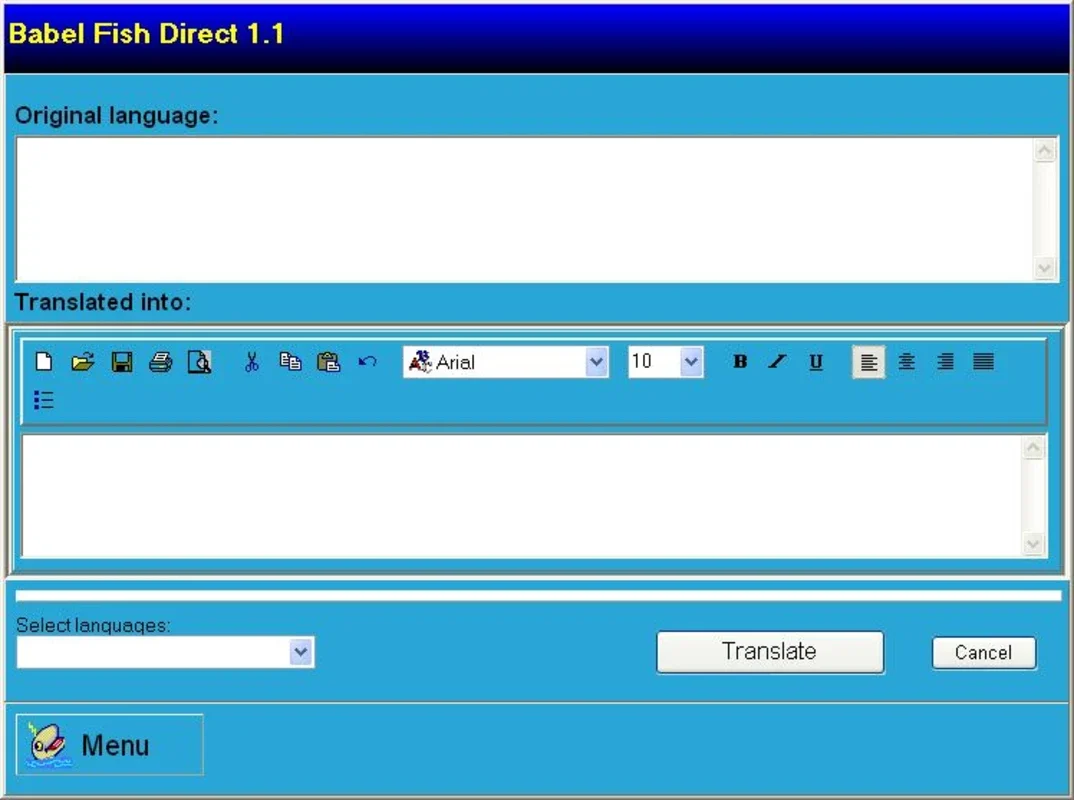Babel Fish Direct App Introduction
Babel Fish Direct, while no longer actively developed or supported, remains a noteworthy example of early full-text translation software. This guide explores its capabilities, limitations, and historical significance in the context of machine translation technology. We'll also compare its functionality to modern translation tools to understand its place in the evolution of language technology.
Understanding Babel Fish Direct
Babel Fish Direct was a software application that leveraged the AltaVista Babel Fish translation service to provide full-text translation capabilities. This meant users could input entire documents or sizable text blocks and receive a translated version, a significant advancement from earlier translation tools that often limited input size or focused on individual words or phrases.
The software's core functionality relied on the AltaVista Babel Fish engine, which employed statistical machine translation techniques. This approach, while less sophisticated than modern neural machine translation, allowed for the processing of larger text segments and provided a reasonably serviceable translation for many language pairs.
Key Features and Capabilities
- Full-Text Translation: The primary feature of Babel Fish Direct was its ability to handle full documents, a significant advantage over word-by-word translators.
- Multiple Language Support: Babel Fish Direct supported a range of languages, including English, French, German, Italian, Spanish, and Portuguese. The exact number and specific languages might vary depending on the version of the software.
- Ease of Use: The software aimed for a user-friendly interface, making it accessible to users with varying levels of technical expertise.
- Integration with AltaVista: The software's reliance on the AltaVista Babel Fish service meant that translation quality was directly tied to the capabilities of that service.
Limitations and Challenges
While Babel Fish Direct represented a step forward in machine translation, it had several limitations inherent to the technology of its time:
- Translation Accuracy: Statistical machine translation, the underlying technology, often produced translations that were grammatically correct but lacked the nuance and precision of human translation. Errors in word choice, idiom translation, and overall contextual understanding were common.
- Limited Language Pairs: The number of supported languages was relatively small compared to modern translation tools.
- Dependence on AltaVista: The software's functionality was entirely dependent on the availability and performance of the AltaVista Babel Fish service. Any issues with the service directly impacted the software's usability.
- Lack of Post-Editing Features: Babel Fish Direct lacked features for post-editing or refining the translated text, requiring users to manually correct any errors.
- No Longer Supported: Crucially, Babel Fish Direct is no longer supported, meaning it's unlikely to receive updates or bug fixes. This makes it incompatible with modern operating systems and potentially vulnerable to security risks.
Comparison with Modern Translation Tools
Compared to modern translation tools, Babel Fish Direct's capabilities are significantly limited. Modern tools utilize neural machine translation (NMT), a far more advanced technique that produces significantly more accurate and natural-sounding translations. They also offer:
- Wider Language Support: Modern tools support hundreds of languages.
- Improved Accuracy: NMT significantly reduces errors and produces more fluent translations.
- Post-Editing Capabilities: Many modern tools offer features for editing and refining translated text.
- Contextual Understanding: NMT excels at understanding context, leading to more accurate translations of nuanced language.
- API Integration: Modern tools often provide APIs for seamless integration into other applications.
Examples of modern translation tools that surpass Babel Fish Direct in capabilities include Google Translate, DeepL, and Microsoft Translator. These tools leverage advanced AI techniques to provide superior translation quality and a wider range of features.
Conclusion
Babel Fish Direct holds a place in the history of machine translation as an early example of full-text translation software. While its capabilities were limited by the technology of its time, it played a role in paving the way for the sophisticated translation tools available today. Users seeking accurate and reliable translations should opt for modern alternatives that offer significantly improved accuracy, features, and ongoing support. The legacy of Babel Fish Direct serves as a reminder of the rapid advancements in the field of machine translation.
